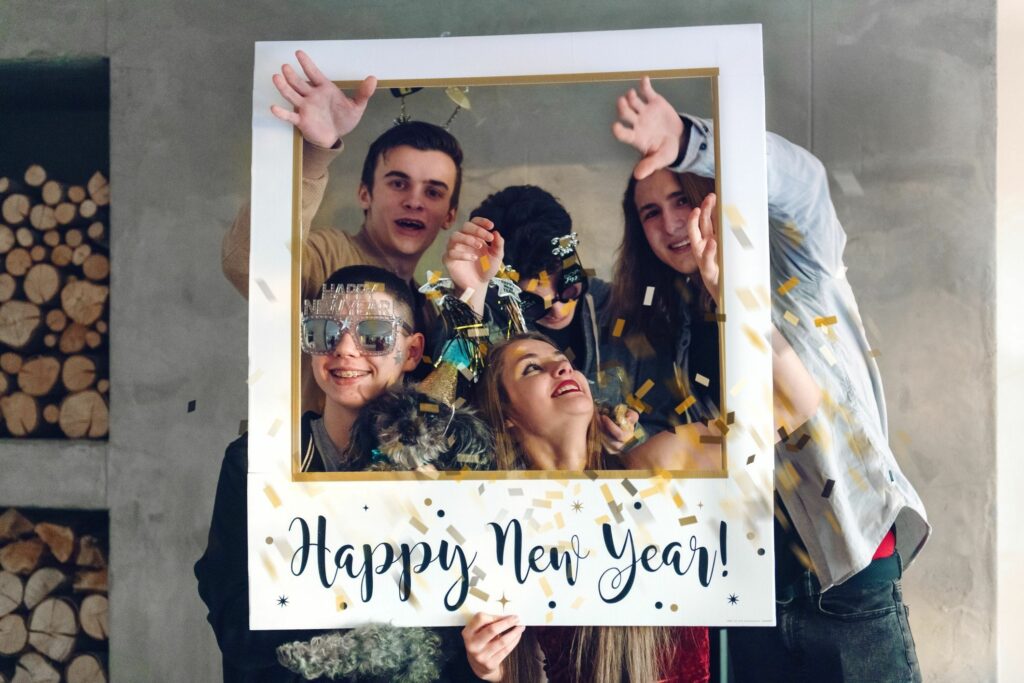Unveiling the Mysteries: 10 Things You Never Knew About New Year’s

Introduction:
New Year’s, a global celebration marking the end of one year and the beginning of another, is steeped in tradition, rituals, and customs that vary across cultures. Beyond the fireworks, countdowns, and resolutions, there are fascinating aspects of New Year’s that often remain hidden in the folds of history and cultural practices. In this exploration, we unveil 10 intriguing things you never knew about New Year’s, shedding light on the hidden stories and unique traditions that make this global celebration even more captivating.
- The Origin of New Year’s Resolutions:The tradition of making New Year’s resolutions dates back to ancient Babylon, around 4,000 years ago. The Babylonians would make promises to the gods at the start of each year, hoping it would lead to favorable outcomes. The concept evolved over time, and today, resolutions are made with a focus on personal development, well-being, and positive change.
- The Curious Tradition of First-Footing:In parts of Scotland and northern England, the first person to enter a home after the stroke of midnight is known as the “first-footer.” This individual is believed to bring good luck for the coming year. Traditionally, a tall, dark-haired man is considered the ideal first-footer, while a fair-haired person is considered less auspicious.
- Ancient Roman Influence on New Year’s Day:The modern Western calendar, based on the Gregorian calendar introduced by Pope Gregory XIII in 1582, designates January 1st as the start of the new year. However, in ancient Rome, the new year initially began in March with the arrival of spring. The switch to January marked a shift in cultural and calendrical practices.
- The Unique New Year Celebrations in Akita, Japan:In the city of Akita, Japan, New Year’s is celebrated with a distinctive tradition known as “Namahage.” Men dressed as demons visit homes, scaring children and admonishing them to behave well in the coming year. This ritual is believed to ward off evil spirits and bring good fortune.
- The Surprising Origin of the Ball Drop in Times Square:The iconic New Year’s Eve ball drop in Times Square has its origins in maritime history. The first ball drop in 1907 was inspired by the time balls used by ships in harbors to set their clocks. The tradition has since evolved into a global spectacle, with millions around the world tuning in to watch the descent of the glittering ball.
- The Scottish Tradition of Hogmanay:In Scotland, the celebration of New Year’s is known as Hogmanay, and it involves various unique customs. One such tradition is “first-footing,” where the first person to enter a home after midnight brings symbolic gifts such as salt, shortbread, and whisky to bring luck and prosperity.
- New Year’s Food Traditions Around the World:Different cultures have specific foods believed to bring good luck in the new year. In Spain, it’s customary to eat twelve grapes at the stroke of midnight, representing each month of the upcoming year. In the southern United States, eating black-eyed peas and collard greens on New Year’s Day is thought to bring prosperity and luck.
- New Year Celebrations Based on Lunar Calendar:In many Asian cultures, New Year is celebrated based on the lunar calendar. The Chinese New Year, also known as the Spring Festival, marks the beginning of the lunar new year and is celebrated with vibrant parades, dragon dances, and traditional feasts. Each year is associated with an animal from the Chinese zodiac.
- The Persistence of Noisemaking Traditions:The tradition of making noise at the stroke of midnight on New Year’s Eve has ancient roots. It was believed that loud noises could scare away evil spirits and bring good luck for the coming year. Today, fireworks, firecrackers, and noisemakers continue to be integral parts of New Year celebrations worldwide.
- The Global Variation in New Year’s Timing:While many countries celebrate New Year’s on January 1st, there are cultural and religious variations in the timing of New Year celebrations. For example, the Jewish New Year, Rosh Hashanah, typically falls in September or October, while the Islamic New Year, also known as Hijri New Year, follows the lunar calendar and varies each year.
Conclusion:
New Year’s is not just a time for parties and resolutions; it is a tapestry woven with rich traditions, historical influences, and cultural diversity. Exploring the hidden stories behind the customs and celebrations adds depth to our understanding of this global phenomenon. From ancient Babylon to modern-day Times Square, from the bustling streets of Tokyo to the serene landscapes of Scotland, New Year’s is a celebration that bridges the past and the present, uniting people across borders in a shared embrace of hope, renewal, and the promise of new beginnings.




